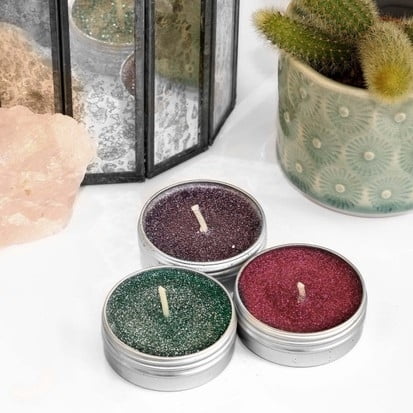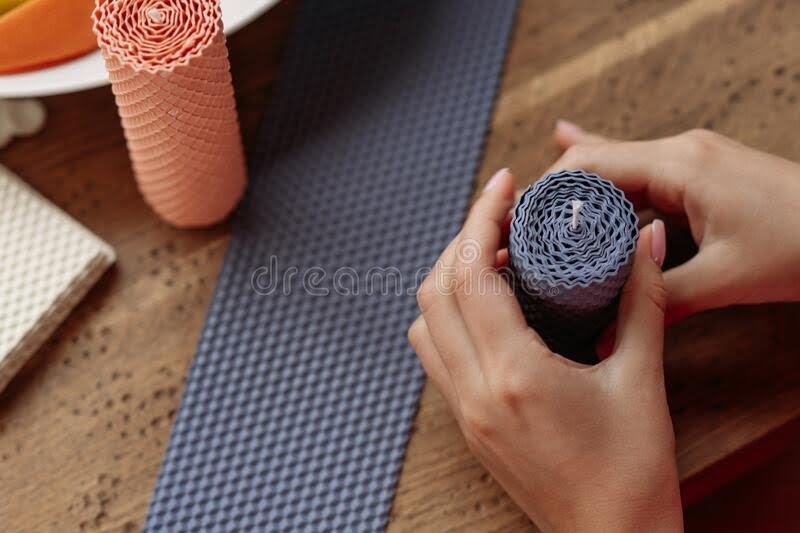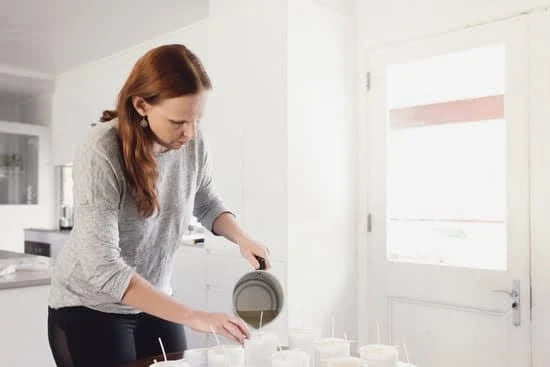Introduction
The art of making scented candles is as old as civilization itself. Fragrance has been used to enhance spaces and create ambiance for centuries, and candles have been the medium through which scent has been delivered in homes and places of worship. Ancient Egyptians were among the first to scent their candles, with the aromas of rubbed fragrant oils placed on the outside of their burning candles. In India, perfumed ghee lamps were popular in homes and temples, while incense sticks were burned as offerings during prayer rituals across Asia. Today, scented candles are an important part of decorating homes around the world and have become a staple in fragrance boutiques. Candles come in a wide range of fragrances, from light and calming lavender to spicier options such as clove or cinnamon. Whatever your preference may be when it comes to candle scents, here are some of the strongest scents for making candles you should consider:
1) Rose – Rose is a classic scent that exudes its beauty throughout a space. It is mysterious yet inviting, emanating a sense of warmth with every breath taken near its flame.
2) Vanilla – Vanilla has long been considered one of the strongest candle scents available to buyers looking for pleasant aromas that remain present throughout an evening or day at home or away. Its creamy top notes are followed by lingering sweetness that can be calming or energizing depending on what else is present in the candle blend.
3) Eucalyptus – This invigorating aroma can help shift energy during difficult times or moments when you need a bit of extra refreshment at home or out and about. Its camphor-like properties add warmth while also leaving behind a chilly aromatherapeutic message across whatever room it enters into contact with.
4) Orange Blossom – Orange blossom is known for capturing summer days perfectly with its sweet yet conversational aroma that encourages creativity yet remains cozy enough for anyone who enjoys hearing about others’ memories associated with it (especially during late afternoon hours).
5) Peppermint – A timeless favorite since ancient times, peppermint stands out from other scent categories due to its numerous physical health benefits when diffused through aromatherapy techniques via scented candles. Whether used solo or combined within another blend, peppermint continues to rein supreme for those looking to share benevolences whenever they please!
Benefits of Different Types of Fragrant Candles
Different types of fragrant candles offer a variety of benefits. Candles scented with essential oils or aromatic herbs can help to soothe and relax the mind, body and soul. Lavender candles often produce a calming effect and have notable anti-anxiety properties that aid in relief from stress and anxiety. Cedarwood candles are known to have a stimulating and energizing effect on the atmosphere in a space, as well as creating an open and elevated feeling of calmness.
Organic wood striped candles make great natural air fresheners, providing a noticeably cleaner scent while helping to purify the air in your home. The fragrance of cedarwood candle paired with lemongrass oil is believed to help create an uplifting atmosphere, whereas the combined aromas of eucalyptus, ginger, rosemary and sandalwood are thought to act as natural disinfectants.
Additionally, many scents commonly used in candles are associated with wellness rituals like yoga or meditation: Palo Santo is known for its spiritual cleansing benefits while Sandalwood has been used for centuries in Ayurvedic medicine for its calming properties; also Orange offers invigoration due to its citric aroma when burning. Choose your favourite kind of fragrance for your next candle making session!
Creating the Perfect Fragrant Combination
Scented candles have been used for centuries by individuals looking to add a warm, calming aroma to their home or workspace. When making candles, being mindful of what type of scent we choose can make all the difference in achieving that perfect fragrant combination. For example, the strongest fragrances are usually considered those with a woodsy base, such as cedar, sandalwood and pine. Floral notes like lavender can also create intense smells if blended with complementary oils. Spicy aromas like cinnamon and clove are known to produce potent scents when combined with other candle elements, such as herbal and citrus oils. Sweet smells like vanilla and almond provide an inviting aroma to any space. To finish off your candle-making experience, consider mixing different scents together if you are looking for something unique and slightly unexpected!
Types of Common Strong Candle Scents
Creating candles can be a great way to enjoy the ambiance of a cozy room or turn plain spaces into something more inviting. When it comes to choosing a scent, some of the strongest and most popular choices include: eucalyptus, citrus, lavender, sandalwood, vanilla, chai spice, gingerbread, cinnamon bun, rose petal, and jasmine. Eucalyptus is known to help reduce stress and anxiety with its minty aroma. Citrus scents like lemon or orange energize the room with their zesty fragrances. Lavender offers a calming effect in any space with its subtle flowery scent. Sandalwood is an earthy aroma that often helps promote relaxation. Vanilla is a smooth and creamy scent that carries a sweetness similar to baked goods. Chai spice adds warmth and spiciness without feeling too overwhelming. Gingerbread has a warm and inviting smell as sweet as the dessert itself. Cinnamon bun adds some sweetness with hints of cinnamon and spices combined together into one enticing fragrance. Rose petal has a captivating florally smell that can be quite powerful in large areas. Lastly, jasmine beams with liveliness when entering any space due to its bright atmosphere-inducing notes.
Tips and Tricks for Making Fragrant Candles
To make the strongest and most fragrant candles, it is important to use a high-quality fragrance oil. The best way to ensure that the scent of a candle will last and fill a room is by adding 10% fragrance oil (or 10 drops of fragrance oil per 1 oz. of wax). Many experts recommend keeping the percentage below 12% because too much can cause discoloration or make scents change quickly.
Once you have chosen your fragrance, there are many other tips and tricks for making sure that it reaches its full potential in your candle. If you’re using natural wax such as soy or beeswax, it is recommended to add 5-10% beeswax pastilles to stiffen up the mixture and help hold more fragrance oil. Additionally, preheating the wax before adding fragrance oils helps those oils take better to the wax when mixed together, ensuring the scent really lingers once extinguished.
For wick selection, thicker wicks will be best suited for stronger scented candles as they need more heat to release their natural aroma into a space. You should also watch out for “tunneling” which can be caused by too thick a wick resulting in one side of your candle burning quicker than the other – preventing all of your hard work from releasing its full smell potential.
Safety Considerations When Working with Fragrances
When working with fragrances while making candles, it is important to take safety into consideration. Fragrances are not just pleasing aromas, they can have adverse effects on the body, such as irritation to the eyes and lungs. Additionally, some fragrances may degrade when exposed to heat and deteriorate over time. It is important to choose candle scents that are safe in terms of ingredients (if applicable), strength levels, and flashpoints. Some of the strongest candle scents include cinnamon, clove, vanilla, lavender, citrus fruits, eucalyptus, sandalwood, rosemary and peppermint. Depending on the particular recipe being used for the candle it also important to use correct ratios of fragrances for optimal scent throw and consistent performance.
Troubleshooting Common Issues with Making Candle Scent
One of the most common issues when making candles, is getting the scent just right. Achieving the perfect scent requires selecting the best candle scents and layering them together to create your desired aroma. The strongest candle scents are those which contain essential oil and fragrance oil combinations, as they tend to be more intense, long-lasting, and have a greater impact throughout the room. Popular essential oils for candle making are jasmine, sandalwood, bergamot, lavender, mandarin orange and rosemary; while popular fragrance oils include musk, woodsy/earthy scents and fruity scents such as pineapple or strawberry.
When troubleshooting common Candle Scent Issues it’s important to consider if your wicks are too large or small – If they’re too large the wick will give off more smoke and soot compared to smaller wicks which burn more evenly with less smoke produced. Also make sure you’re using an adequate amount of scent for your recipe. The recommended amount is typically between 4-7%, however this can be adjusted depending on size and strength of desired scent. Furthermore test out different batches if consistency is a concern – experimenting with different ratios of waxes (paraffin/soy) and additives such as beeswax or vegetable oil can help you achieve desired colors/textures while still achieving maximum scent intensity. Finally use quality ingredients – using high grade soy wax can ensure even burning times compared to lower grade paraffin waxes that may easily produce soot buildup in your container candle jars.
Resources for Finding Quality Fragrances for Candles
One of the most important elements when making candles is choosing the right scent. Scents, also referred to as fragrances, can add a certain ambiance or feeling to a room and can even be used therapeutically. Some of the strongest candle scents include lavender, jasmine, sandalwood, patchouli, and chamomile.
For those interested in discovering even more candles scents to make their creations unique, there are endless resources available online that offer various fragrances. Websites such as Candlesnuff and Natures Garden Supplies provide detailed descriptions of their products to help narrow down options based on scent categories like floral or herbs. Companies like CandleScience specialize in providing quality Candle Fragrance Oils for both natural and synthetic ingredients at varying levels of concentration. Shopping around for unique fragrance oils is also an option that those who enjoy DIY projects may want to explore. Those looking for a one-stop shop may want to check out retailers such as Amazon that offer thousands of different scents from many popular brands.
Conclusion
Choosing a strong candle scent when making candles comes down to personal preference. Choosing a softer, more subtle scent can help make a relaxing atmosphere while choosing a more powerful, intense scent will create an energizing environment. When selecting scents, consider the wax type and room size as both of these factors can impact the strength of the smell. A bigger room needs a stronger scent, while a smaller space might be overpowered with extremely pungent candles. Try combining different scents to create something that works for you and your desired atmosphere – for example, combining floral notes with earthy notes like patchouli or cedarwood. Last but not least, use your own sensory experiences as guides – what fragrances do you love most? What facet of each aroma stands out to you? Above all else, have fun and let your creativity lead you in choosing the strongest candle scents that work best for you!

Welcome to my candle making blog! In this blog, I will be sharing my tips and tricks for making candles. I will also be sharing some of my favorite recipes.





